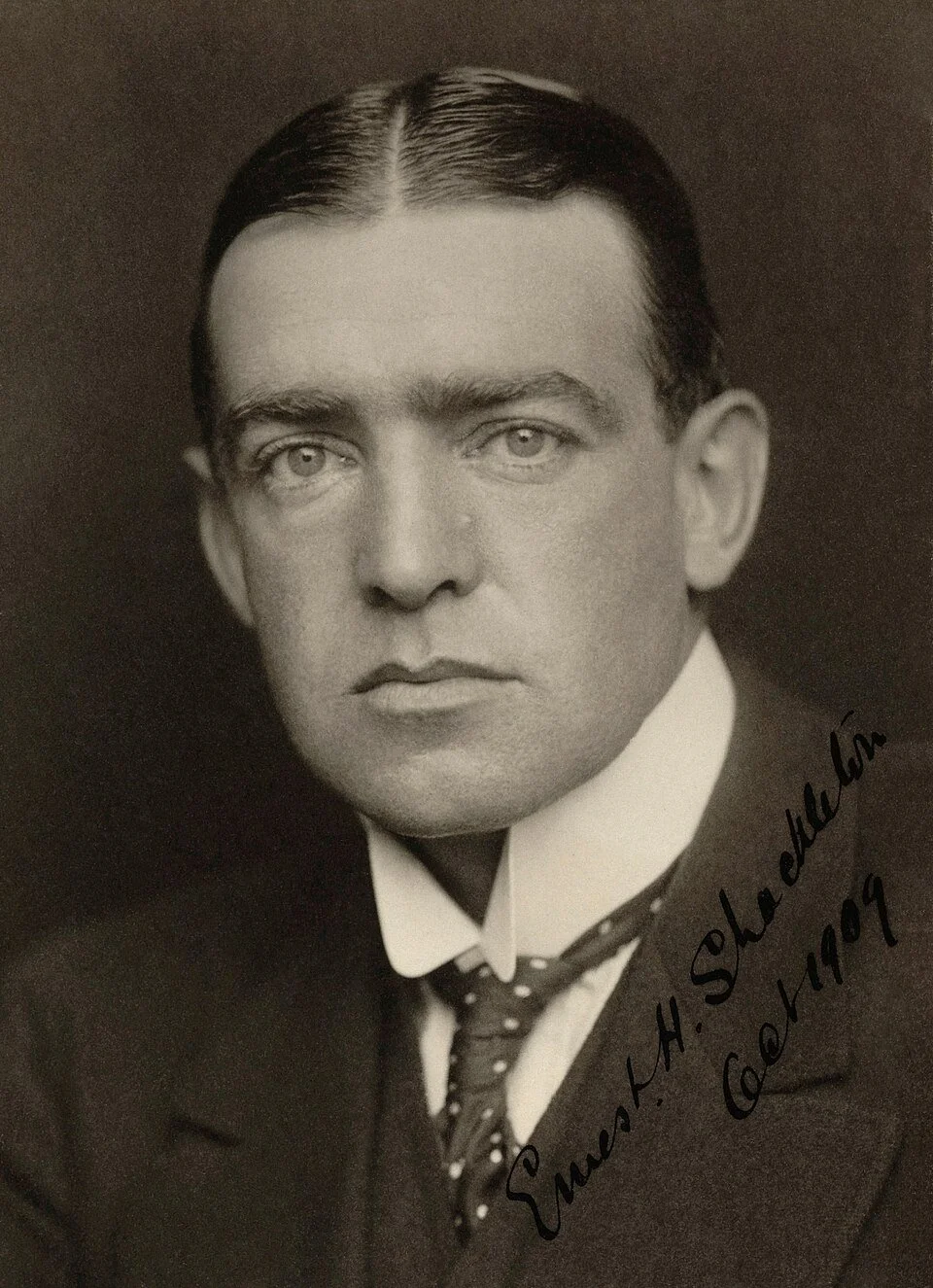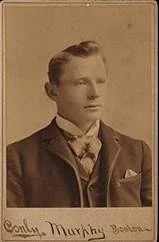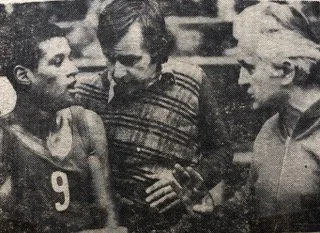This the story of William Hitler, the nephew of Adolf Hitler. William enlisted and served in the U.S. Navy in 1944 after personally imploring the President, Roosevelt to admit him into the Allied armed forces. After some understandable hesitation, the U.S. authorities relented, and William proceeded to join the fight against the Axis regime in the Pacific. This is his story.
Steve Prout explains.
William Hitler receiving his honorable discharge from Navy Commander Louis A. Fey.
The early life of William Hitler
William was born in March 1911 in Liverpool, England to Alois Hitler and Bridget Dowling. Alois, William’s father was the half-brother of Adolf Hitler, therefore making Adolf William’s half uncle. William’s parents met in 1909 in Dublin when Alois was working as a waiter. Alois met Bridget Dowling there and they quickly eloped to London in 1910 and married. It was not an auspicious start to married life because Alois was accused of “kidnapping” Bridget by her father. The reality was that Alois did not obtain the customary yet old-fashioned blessing for the marriage from Bridget’s father. Eventually Bridget’s family become resigned to the fact that the marriage was now a fait accompli. The couple then moved and settled in Toxteth, Liverpool where William was born a year later.
The marriage did not last, and Alois returned to Germany in 1914 where he entered a bigamous marriage with Hedwig Mickley. They would both produce a son whom them named Heinz. Unlike William, Heinz became an ardent Nazi, who later perished in Soviet captivity in 1942. Alois became a restaurant owner which continued to run throughout the war’s duration. His wife, Bridget, was left to raise William alone in England now with the aid of her Irish family. Meanwhile, in Germany Adolf Hitler was about to make the family name a terrible part of history.
At the age of eighteen, while his half-uncle Adolf was making his presence known in German politics, William took on a more sober profession and trained to be an accountant in Highgate, London with Benham and Sons. When his connection to Adolf Hitler was discovered, his position was allegedly terminated, and many subsequent opportunities became closed to him.
Visting Germany and meeting Adolf Hitler
In 1929, after turning eighteen, William visited in Germany at the request of his estranged father. While in Germany he met his uncle Adolf Hitler for the first time, who was beginning to make an impact on German political life. After a brief stay William returned England. The first meeting with his uncle did not go well. Shortly after his return to England William was ordered to return to Berlin by Adolf, who subsequently admonished his nephew for his public revelations about him. William had on his return authored several articles that were published which irked the Nazi leader and he forced William to withdraw them. The incident appeared to have blown over, or it was more likely that Adolf Hitler’s wider ambitions in German politics consumed his full attention. William would try unsuccessfully to make a life in England and Adolf would seize control of Germany. It would be another four years before William would visit again and that also did not go well for William.
In 1933 William returned to Germany, this time on the advice of his mother with the plan to use Adolf Hitler’s influence to improve William’s career opportunities. Britain at the time was still recovering from the Great Depression and had little to offer William. To make matters worse, being related to the Hitler family was very limiting for William; however, Germany’s economy was showing signs of prosperity and being related to Adolf Hitler carried some currency for William.
The plan seemed to work at first. Adolf’s influence first found William work in the Reich Credit Bank. This did not seem to favor William who then took on the role as a car salesperson in the Opel Car Factory. William did not last in any of these jobs and his constant demands for alternative ones exasperated his uncle. He would soon label William, “My loathsome nephew” and stated, “I didn’t become Chancellor for the benefit of my family…No one is going to climb on my back.” In 1939, after refusing to give up his British citizenship and fearing being trapped in In Germany while it was in a war, he fled back to England and then onto the USA. William had spent six years in Germany.
Willam also had little good to say about his uncle and of his time in Germany. On a tour of the USA in 1939 he officially announced that he “had no time for Hitler” and he (Adolf) was “of no benefit to the human race”.
He was projecting as an avid anti-Nazi doing “the right thing” but let us for a moment analyze that stance. Was the extent of his antipathy toward his uncle or the regime. Also was it more owing to failure to prosper in Germany than a dislike of Nazism?
William spent six years in Germany, and this was long enough to not fail to see the loathsome direction the Nazi Party and his uncle were taking the country and its people. However, we do not know how well acquainted he was with Adolf Hitler and how often he met his uncle. It is worth considering that in 1939 the true face and brutality of Nazism and Hitler were now becoming clearer to the world . Public events such as Kristallnacht, the antisemitism in the streets, the growing totalitarianism, the secret police, the rallies, and the growing militarism did not seem to deter William who still persisted in trying to carve out a career when all this was going on. He still could have easily slipped back to England. We will never know, and this is doing him a disservice.
William, the USA, and the war
After William left Germany, he visited the United States with his mother and began an anti-Nazi themed lecture tour that focused on his time with Adolf Hitler. This was encouraged by publisher William Randolph Hearst who, like William, saw this as very lucrative. William immediately went on a nationwide lecture tour of the USA. It was simply titled “My Uncle Adolf.” The content was of course focused on his experiences with Hitler and the Nazis to the various audiences. This would be the only theatre where William would challenge his uncle’s regime. His combat experience would be confined to the Pacific theatre.
When World War II broke out William was still in the United States, but he still tried to join the British forces. For obvious reasons he was rejected and for a short while he sat as a bystander as the German army subjugated Europe. When the U.S. later entered the war William send a letter dated March 3, 1942, to President Roosevelt appealing for him to be allowed to join the U.S. forces and stating why he felt he was not allowed to serve in the British forces. The letter read:
“I am the nephew and only descendant of the ill-famed Chancellor and Leader of Germany who today so despotically seeks to enslave the free and Christian peoples of the globe. Under your masterful leadership men of all creeds and nationalities are waging desperate war to determine, in the last analysis, whether they shall finally serve and live an ethical society under God or become enslaved by a devilish and pagan regime.”
It continues:
"All my relatives and friends soon will be marching for freedom and decency under the Stars and Stripes … I am respectfully submitting this petition to you to enquire as to whether I may be allowed to join them in their struggle against tyranny and oppression. As a fugitive from the Gestapo, I warned France through the press that Hitler would invade her that year. The people of England I warned by the same means that the so-called ‘solution’ of Munich was a myth that would bring terrible consequences….The British are an insular people and while they are kind and courteous, it is my impression, rightly or wrongly, that they could not in the long term feel overly cordial or sympathetic towards an individual bearing the name I do.”
His application was passed to the FBI who eventually seemed satisfied with his background and his intentions. William was drafted into the US Navy in March 1944. He served as a pharmacist’s mate (aka hospitals corpsman), earning himself the purple heart medal after receiving a shrapnel wound to the heart. He remained in service until 1947. Whether his uncle knew about his enlistment or not we cannot be certain. It is more likely Adolf Hitler showed no interest in his nephew’s affairs after washing his hands of him before the war. Also, Adolf Hitler’s mental state deteriorated as the tide of the war was turning against Germany, therefore his “loathsome nephew” would have been of little interest to him amid his more pressing concerns.
Post War Life
After the war, William changed his name to William Stuart-Houston and became an entrepreneur. He married Phyllis Jean Jaques in 1947 shortly after leaving the navy. Unlike his father before him he remained married and stayed with Phyliss until his death in 1987. It was a marriage that was certainly more successful than that of his parents. They had four sons born between 1949 and 1965, Alexander, Louis, Howard, and Brian (the latter being the youngest). None of William’s children sired any offspring. His wife, Phyllis, died in 2004.
It is of little surprise that William would spend his life in relative obscurity after the war. The true nature of his uncle’s legacy and the full extent of the Nazi atrocities were a permanent stain to his name. William had an extraordinary life, with winning the Purple Heart, being personally attended to by Roosevelt, vehemently opposing Adolf Hitler, and going on to run a successful business in America.
Although William served as a medic in the US Navy and not in actual physical combat, the challenges he faced were just as formidable. He had the reputation of his family name to overcome and as the horrors of the Nazi brutality were revealed post war, that challenge certainly would not have been made any easier. Despite his limited combat experience his actual contribution to the Allied cause was greater than he could have imagined. His public opposition to his uncle and his voluntary service spoke volumes as invaluable propaganda for the Allies.
The site has been offering a wide variety of high-quality, free history content since 2012. If you’d like to say ‘thank you’ and help us with site running costs, please consider donating here.

















